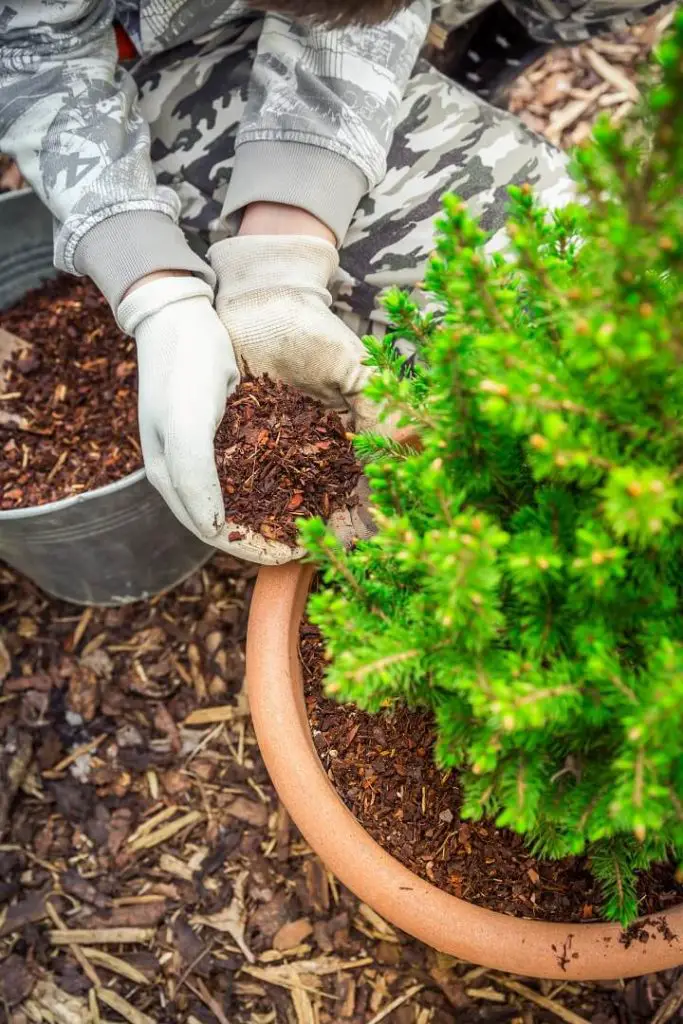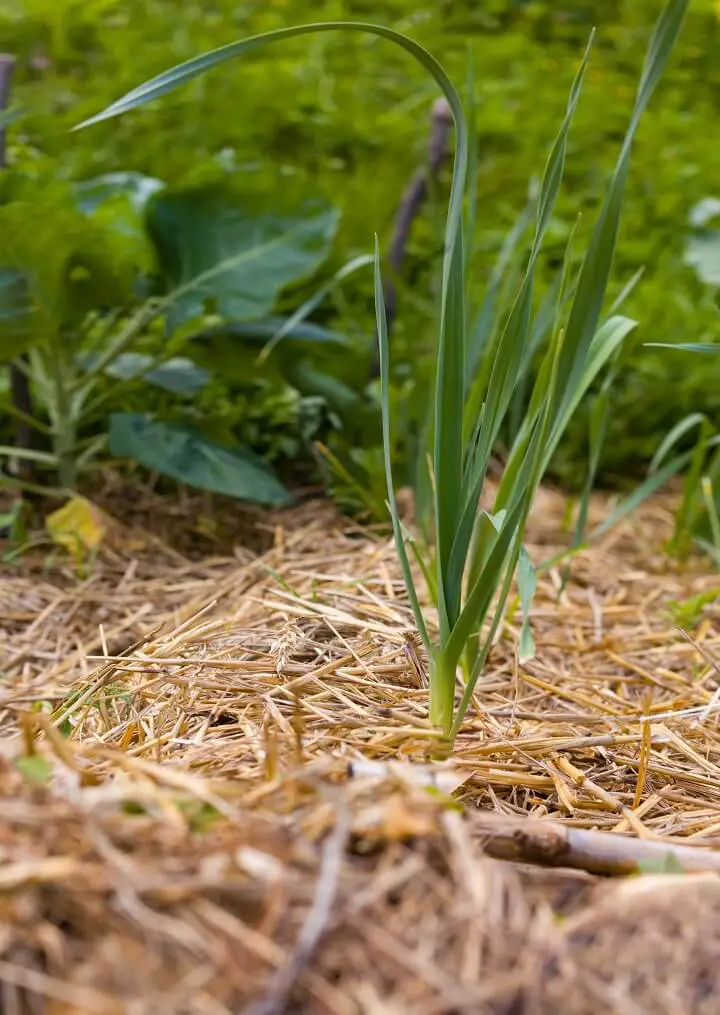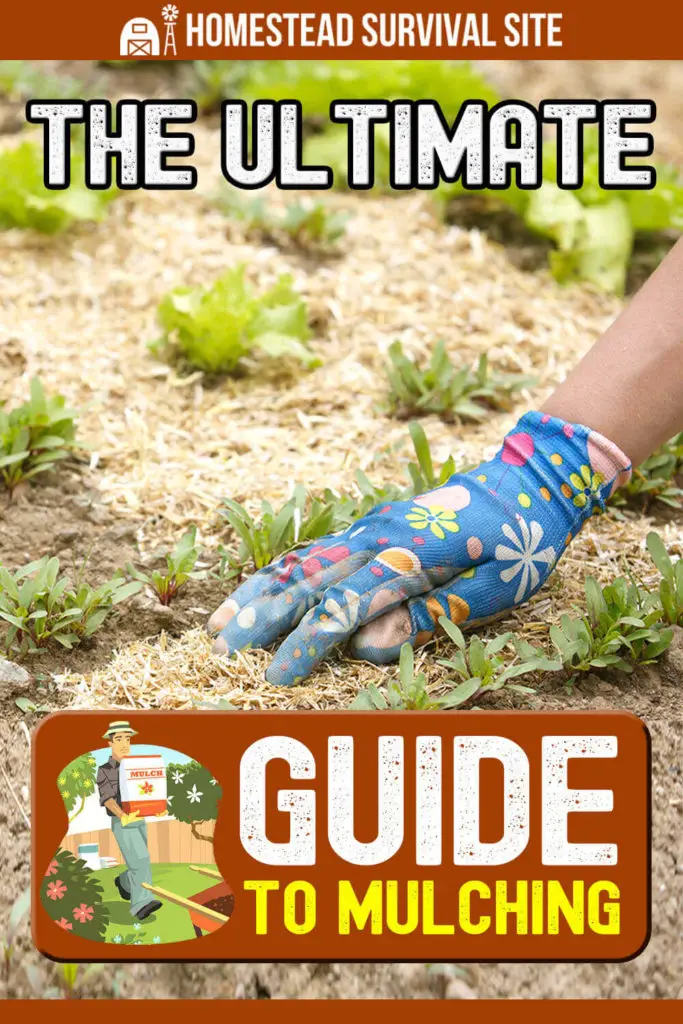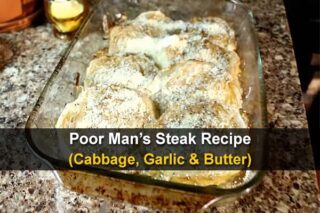Estimated reading time: 11 minutes
Many people think of mulch as something you put down around trees and flowers to make a yard look nice. That’s true, and mulch does improve the appearance of any yard or garden, but there’s more to mulch than a pretty yard.
Mulch is any organic (or sometimes inorganic) matter that can be safely spread around plants to accomplish a variety of things.
Mulch Helps Soil to Retain Moisture
Most soils are dark black and that’s the one shade or color that absorbs the most radiation (heat) from sunlight. An un-mulched bed of soil will evaporate water more quickly and raise the temperature of the soil, potentially affecting the roots of the plant.
Want to save this post for later? Click Here to Pin It On Pinterest!
Mulch Helps Prevent Weed Growth
A layer of mulch will inhibit the growth of weeds that find their way into your garden. You have to time your mulching or it can prevent or inhibit the growth or your flowers or vegetables too.
Mulch Adds Nutrients to the Soil
As any mulch decomposes, it adds nutrients as it composts. How long any mulch takes to decompose depends on the type of mulch. We’ll cover the pros, cons, and composting rates of various mulches later.
Mulch Helps to Manage Soil Temperature in a Garden
In winter, mulch will help the soil in a garden to preserve some level of heat, prevent the soil from warming during winter warm spells, and prevent soil from heaving as a result of freezing and thawing. Heaving pulls roots apart and out of the soil and injures perennial plants.
In summer, mulch has the same temperature management properties, preventing soil from overheating and cooking shallow roots. It keeps soil and plant roots relatively cool, especially during intense periods of high heat which seem to be more frequent these days.
Mulch Improves the Appearance of Your Yard and Garden
That gets back to the benefit we started with, but it also makes it easier to identify plants in a diverse garden and can provide vining vegetables like squash with a soft landing zone for fruit development and growth.
Types of Mulch
There are essentially two types of mulch: organic mulch and inorganic mulch. Both have varying degrees of benefits and often appear together in different parts of a yard or garden. Some are also combined within any given space.
Organic mulches are natural materials that decompose with time and eventually add nutrients to the soil.
Inorganic mulches don’t decompose but still present mulch benefits like water retention, week prevention and protection from temperature extremes. Some are in fact natural materials like stone and sand.
Organic Mulches
Chopped Leaves
- Primary Use: Flower and vegetable gardens.
- Pros: Excellent moisture retention and weed barrier. Good compost material. Free if you rake your own.
- Cons: Un-chopped leaves can suffocate the ground and prevent moisture from penetrating. Can be a haven for pests like snails, slugs and pill bugs.
- Notes: Mow and rake leaves before mulching. Require 2 to 3 reapplications per year.
Wood Chips
- Primary Use: Flower, vegetable gardens, around trees and paths.
- Pros: Very slow to compost so ideal for paths. Hardwoods last longer than softwoods.
- Cons: Not as good for water retention unless combined with compost or peat moss.
- Notes: Some municipalities offer it free.
Compost
- Primary Use: Flower, vegetable gardens and around trees and shrubs.
- Pros: Not as good as a weed barrier but often used in combination with other mulch.
- Cons: Decomposes quickly so either requires multiple applications or combined with other mulch types.
- Notes: Watch the depth of your compost when using as mulch or roots will be tempted to grow up into the compost.
Straw or Hay
- Primary Use: Vegetable gardens.
- Pros: Excellent water retention and easily composts. Inexpensive and widely available. Straw is better than hay because it is less likely to have weed seeds.
- Cons: Does not make a good weed barrier unless piled at least 6-inches deep. Requires additional applications in season. Somewhat messy due to wind.
- Notes: Use seed-free straw or hay or you’ll just be introducing more weeds to your garden. Avoid straw or hay that have been sprayed with any chemical.
Pine Needles
- Primary Use: Around trees and flower beds.
- Pros: Good water retention and weed prevention.
- Cons: Highly acidic so don’t use unless soil is too alkaline or you have acid loving plants.
- Notes: Slow to decompose.
Sawdust
- Primary Use: Around flower beds.
- Pros: Good water retention, poor weed prevention. Decomposes with time.
- Cons: Can compact cutting off air to ground and cause water runoff.
- Notes: Best used with other mulch. Avoid sawdust from any chemically treated wood.
Newspaper, Burlap, or Cardboard
- Primary Use: Underlayment for other mulch or as “sheet mulch” on its own.
- Pros: Excellent moisture retention and weed barrier. Adds nutrients to soil although burlap takes longer.
- Cons: Unsightly if not covered with another mulch. Avoid thick cardboard.
- Notes: Avoid glossy color paper usually from newspaper inserts. Make sure burlap is 100% jute without interwoven plastic fibers.
Tree Bark
- Primary Use: Flower, vegetable gardens and around trees.
- Pros: Excellent moisture retention and weed barrier. Decomposes slowly. Fairly inexpensive.
- Cons: Dyed bark should not be used in vegetable gardens. Avoid cedar around plants.
- Notes: Can be purchased by the bag or in bulk. Some tree companies offer it free. Avoid pine bark around vegetables or flowers –too acidic.

Inorganic Mulches
River Rocks
- Primary Use: Paths, walkways or chronically muddy areas.
- Pros: Long-lasting and durable. Doesn’t require refurbishment. Natural insulation against heat or cold.
- Cons: Relatively expensive. Heavy. Can capture heat in hot climates. Poor water retention.
- Notes: Avoid pea gravel. It does not make a firm surface for walkways. No nutrient value.
Plastic Sheeting or Landscaping Fabric
- Primary Use: As a foundation layer for mulch in vegetable and flower gardens and a base for stone under decks and sheds.
- Pros: Excellent weed prevention. Long lasting and relatively inexpensive. Warms the soil and radiates heat to plants overnight.
- Cons: Water percolation restricted unless there are punched holes or is a semi-permeable membrane. Also inhibits nutrient transfer unless semi-permeable.
- Notes: Requires another mulch as a topping to hold it in place unless using landscaping staples. No soil-enriching benefits if used alone.
Chopped Rubber
- Primary Use: Paths, common in playground areas.
- Pros: Won’t decay or attract insects. Inexpensive.
- Cons: Not for use in vegetable gardens. Can leach chemicals into ground.
- Notes: Have a cushioning effect and is why it’s often used in playgrounds.
Crushed Stone
- Primary Use: Paths and walkways.
- Pros: Tend to have sharp edges that allow it to compact better than smooth stones.
- Cons: Difficult to remove once compacted. More expensive than most organic mulch.
- Notes: Often used for permanent walkways and paths. Less expensive than other natural rocks.
Sand
- Primary Use: Retaining walls, between brick pavers, gardens.
- Pros: Will not freeze, inexpensive.
- Cons: Poor weed prevention and average water retention.
- Notes: Can also be used to fill spaces in rock or stone for paths.
Mulching Tools
It’s not complicated but a few tools can make mulching easier:
- Wheelbarrow – Whether you buy mulch by the bag or make your own a wheelbarrow will make hauling your mulch around a whole lot easier.
- Squared off shovel or spade – Digging mulch out of your wheel barrow and spreading it is a lot easier shovel that has a squared tip on the shovel blade.
- Rake – Gently moving and arranging your mulch is easier with a rake, especially in large spaces.
- Mulch fork – Yes, there is such a thing. It’s similar to a pitchfork and also makes things easier when handling mulch.
- Garden gloves – The best and gentlest way to move mulch around tender plants and new shoots is with your hands. Garden gloves will protect you from some of the surprises in mulch like splinters.
Mulch Tips
- The best time of year to mulch is early to mid-spring and again in the fall. You should also spot-mulch if you notice any has thinned due to rain runoff, wind or general garden activity. Remember too that some mulch like stones, bark and wood chips may not need to be reapplied in the fall. It all depends on how quickly any mulch decomposes.
- However, always allow seeds to sprout before mulching. Flowers and vegetable seeds will have the same challenge as weeds when it comes to sprouting through mulch. Wait until the seedlings are a few inches tall before mulching.
- Always weed or pull dead vegetable and flower plants from the ground before mulching. This is especially important for weeds that can reseed and do battle with even the best mulch.
- Edging flower beds is a good idea if you want to contain your mulch and keep it from migrating into grassy area.
- Water garden beds and vegetable gardens before applying mulch to help seal in moisture.
- A standard recommendation is to apply 2 to 4-inches of mulch to any garden bed. A lot depends on the type of mulch. Straw and hay require up to 6-inches until it settles and compacts. Rocks, bark and wood chips usually are applied 3 to 4-inches thick. Compost requires only 2-inches or so. If you make the mulch layer too thick with the wrong material water may not effectively reach the soil underneath.
- Keep an eye on your flower beds and vegetable garden and add more mulch is you see a spot that is thinning or sparse due to new plantings.
- If an area is notoriously weedy, lay down plastic sheeting, landscaping fabric or cardboard first and then top with mulch.
- Remember that any type of stone is more of a landscaping product. Try to isolate its use to walkways and paths. It has no organic material that can decompose and add nutrients to soil.

Mulch Fails
- Failing to replenish mulch that has decomposed or been scattered by wind, new plantings, animals or general activity in the garden.
- Mulch volcanoes around trees. Don’t mound mulch around the base of a tree trunk. It becomes an avenue for insects, holds in moisture leading to mold and cuts off air circulation to the tree bark.
- Avoid piling mulch against plant stems or the trunk of any tree. The constant contact with moisture can cause rot or become a habitat for slugs or other pests. Try to keep 2-inch ring around the stem of any plant and about a 4 to 6-inch wide open space around any tree.
- Using the wrong mulch in the wrong place. Stop and think about what any plant or location needs and align the benefits of different mulches with that location while being mindful of the overall impact.
- Spreading mulch too thick or too thin. Make sure you have the optimal depth for any given mulch. Compost can be spread thin while straw needs to start out thick.
- Failing to mulch over winter. It’s easy to think it’s all about spring and summer but winter mulch continues to protect roots of perennial plants from extremely cold temperatures and soil heaving from freezing and thawing. Best winter mulches include straw, hay, pine needles, bark or wood chips.
- Beware bad bark. If you harvest and chop your own bark it’s probably coming from a dead tree. Figure out what killed that tree. If it was the larvae from a beetle or borer you may be reintroducing those borers to a new tree.
- More bad bark. Chemically dyed bark is okay round trees and flowers but could leach chemicals into a vegetable garden. Try to stick with natural, organic mulch for any vegetable garden.
- Freshly ground wood chips can draw nitrogen from the top layer of soil when first introduced as mulch. Try to keep fresh wood chips for walkways and paths and use other materials for gardens.
- Sawdust and leaf mats. Some mulches like sawdust and whole leaves can mat and create a barrier to water and air circulation. Either chop the leaves with your mower or in the case of sawdust, combine with another mulch.
- Never mulch with a manure that is not fully composted. Fresh manure can be too rich in nitrogen and harm plants and manure from dogs, cats and pigs should be avoided altogether due to the fact that they can contain pathogens that are harmful to humans.
- Avoid using grass clippings. Most grass is chemically treated and may kill plants or add toxins to vegetables. If it’s not chemically treated it’s most likely loaded with weed seeds. It’s just not worth it. If you want to make your own mulch stick to leaves, bark and compost and yes, you can compost the grass but keep fresh grass clippings off the mulch list.
- Keep an eye on your plastic sheeting. If you’ve used plastic sheeting or landscape fabric, make sure there are sufficient holes to allow water to drain through and get to your plants. If a plant looks wilted while others look fine it may be because the sheeting is not allowing sufficient water to get through to the ground.
Don’t overdo it. Mulching is just one of many ways to improve the health and yields of your plants and vegetables. Once your mulch is in place, you can attend to other garden activities while keeping an occasional eye on the mulch. If applied properly, it will make every garden easier, better, and something anyone would admire.
Like this post? Don't Forget to Pin It On Pinterest!






![Here's How To Use A Grain Mill And Make Flour [With Pictures]](https://homesteadsurvivalsite.com/wp-content/uploads/heres-how-to-use-a-grain-mill-and-make-flour-with-pictures-wide-1-320x213.jpg)





